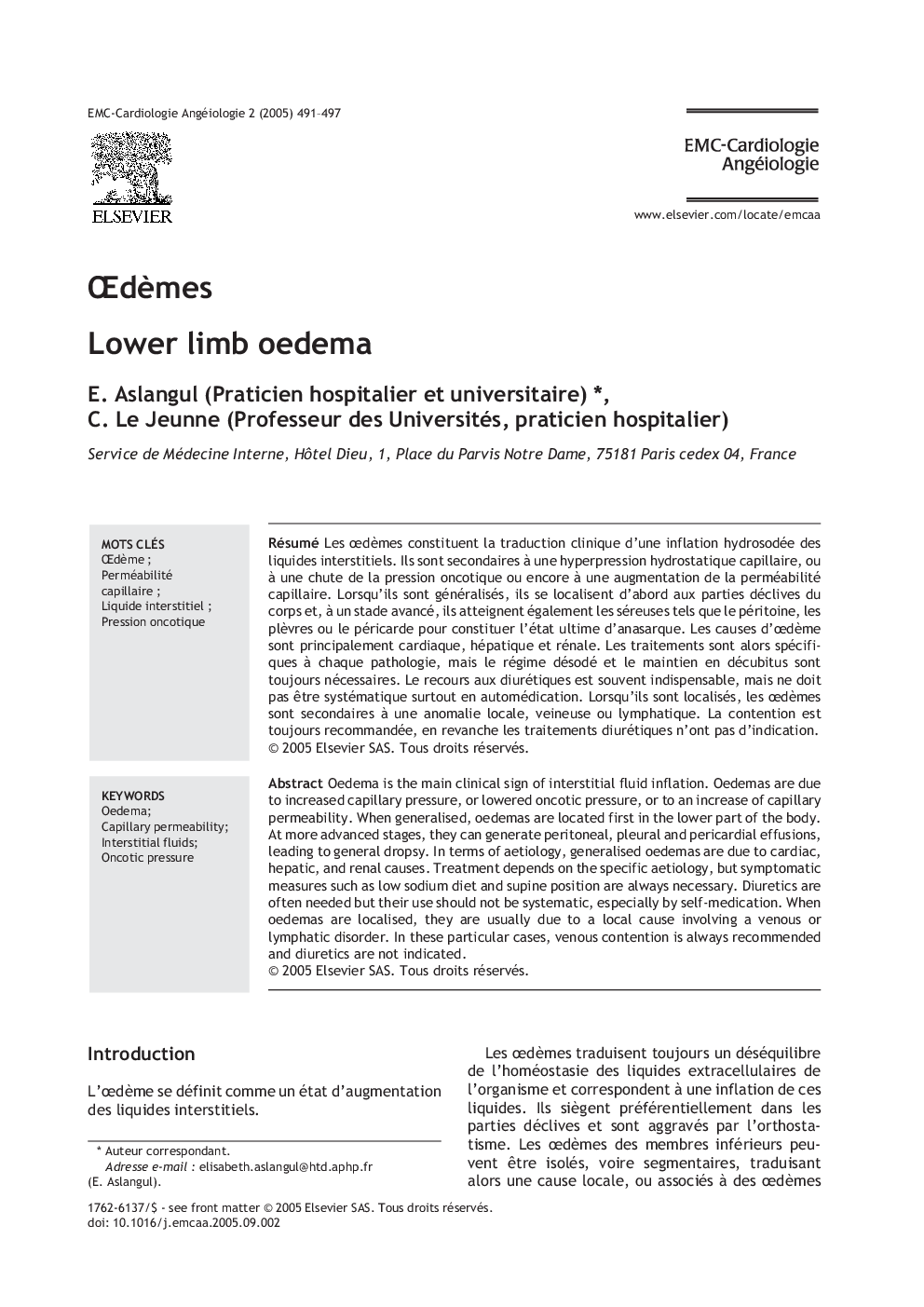| Article ID | Journal | Published Year | Pages | File Type |
|---|---|---|---|---|
| 9167407 | EMC - Cardiologie-Angéiologie | 2005 | 7 Pages |
Abstract
Oedema is the main clinical sign of interstitial fluid inflation. Oedemas are due to increased capillary pressure, or lowered oncotic pressure, or to an increase of capillary permeability. When generalised, oedemas are located first in the lower part of the body. At more advanced stages, they can generate peritoneal, pleural and pericardial effusions, leading to general dropsy. In terms of aetiology, generalised oedemas are due to cardiac, hepatic, and renal causes. Treatment depends on the specific aetiology, but symptomatic measures such as low sodium diet and supine position are always necessary. Diuretics are often needed but their use should not be systematic, especially by self-medication. When oedemas are localised, they are usually due to a local cause involving a venous or lymphatic disorder. In these particular cases, venous contention is always recommended and diuretics are not indicated.
Related Topics
Health Sciences
Medicine and Dentistry
Cardiology and Cardiovascular Medicine
Authors
E. (Praticien hospitalier et universitaire), C. (Professeur des Universités, praticien hospitalier),
